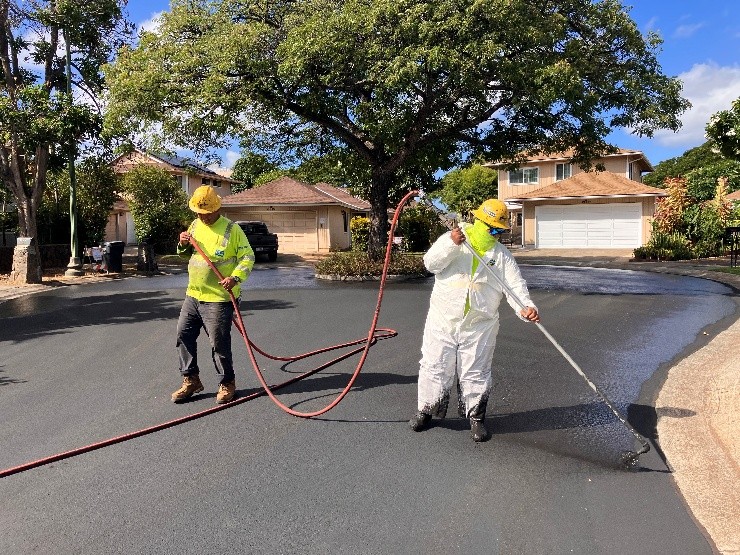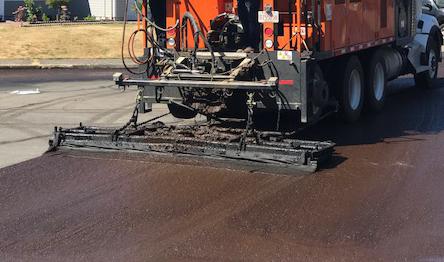By Brad Tom
January 2024
Both slurry seal and sealcoating are effective methods for maintaining asphalt surfaces. However, each method has its own unique properties and ideal applications.
Sealcoating is a thin liquid layer applied over a paved surface to protect it from damage caused by UV rays, rain, and fluids from vehicles. It is a cost-effective way to extend the life of your pavement. Slurry seal, on the other hand, is a thicker, more durable solution. Composed of asphalt emulsion, fine aggregates, and water, it provides a longer-lasting seal but comes with a higher price. Both sealing methods have pros and cons, and the best choice depends on the specific needs of your pavement.
Which makes your asphalt look "nicer," a slurry or sealcoat?
Both give your asphalt a rich, black color, as if the asphalt were brand new. But a sealcoat provides a smoother surface than a slurry because it contains smaller (or has no) aggregates. If your pavement has unraveled and is rough, then a slurry may help in filling in surface voids (because it contains larger aggregates) and correct rough spots on the pavement.
However, if your pavement is bad and has structural damage, neither a slurry nor a sealcoat will help resolve the issue. Both would only provide a superficial, cosmetic "fix," in terms of appearance.
When is slurry seal or sealcoating right for my asphalt maintenance project?
Slurry seals are highly resilient and better suited to filling worn and unraveled areas, because of the aggregate mixed in, and they last longer — up to 10 years, versus five for seal coats. However, the heavy equipment needed to apply a slurry seal makes it almost twice as expensive as a seal coat on average.
The main difference between slurry seal and sealcoating is the amount of aggregate used in the mixture. Sealcoating uses a small amount of fine or no aggregate, while slurry seal has large aggregate. This makes slurry seals more durable and better suited for high-traffic areas.
In conclusion, both slurry seal and sealcoating are effective methods for maintaining asphalt surfaces. The best choice depends on the specific needs of your pavement. If you have a parking lot, driveway or small road that sees low speed/volume traffic, then a cost-effective solution would be sealcoating. However, if you need a more durable solution that can withstand heavy traffic, slurry seal may be the better choice. It is always best to consult with an expert in the field to decide which method is right for your project and what steps you can do to extend the life of your asphalt pavement.












 For asphalt in areas with slow moving vehicle traffic and foot traffic such as but not limited to: parking lots, driveways, residential streets and walkways. Because of the increase in tires grinding on the asphalt, motor fluids dripping and other damage to the pavement, it is so important to seal cracks promptly and properly. As asphalt ages, it will oxidize and shrink causing random cracking throughout the pavement. Cracks in the asphalt allow moisture to seep below the pavement and leads to potholes and speeds up the deterioration of the pavement. Properly sealing cracks that appear can more than double the effective service life of the asphalt pavement.
For asphalt in areas with slow moving vehicle traffic and foot traffic such as but not limited to: parking lots, driveways, residential streets and walkways. Because of the increase in tires grinding on the asphalt, motor fluids dripping and other damage to the pavement, it is so important to seal cracks promptly and properly. As asphalt ages, it will oxidize and shrink causing random cracking throughout the pavement. Cracks in the asphalt allow moisture to seep below the pavement and leads to potholes and speeds up the deterioration of the pavement. Properly sealing cracks that appear can more than double the effective service life of the asphalt pavement.